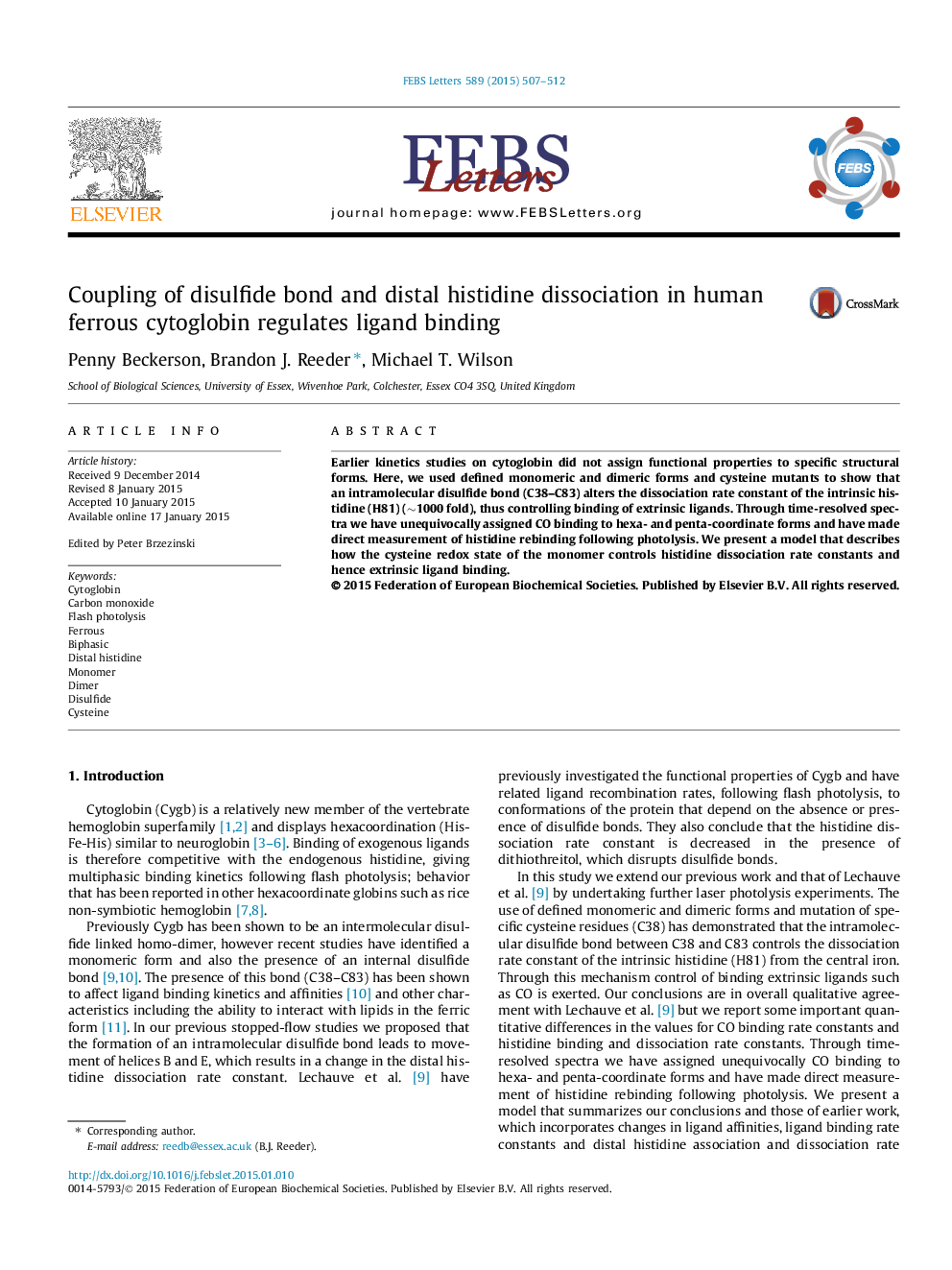| Article ID | Journal | Published Year | Pages | File Type |
|---|---|---|---|---|
| 10870004 | FEBS Letters | 2015 | 6 Pages |
Abstract
Earlier kinetics studies on cytoglobin did not assign functional properties to specific structural forms. Here, we used defined monomeric and dimeric forms and cysteine mutants to show that an intramolecular disulfide bond (C38-C83) alters the dissociation rate constant of the intrinsic histidine (H81) (â¼1000Â fold), thus controlling binding of extrinsic ligands. Through time-resolved spectra we have unequivocally assigned CO binding to hexa- and penta-coordinate forms and have made direct measurement of histidine rebinding following photolysis. We present a model that describes how the cysteine redox state of the monomer controls histidine dissociation rate constants and hence extrinsic ligand binding.
Keywords
Related Topics
Life Sciences
Agricultural and Biological Sciences
Plant Science
Authors
Penny Beckerson, Brandon J. Reeder, Michael T. Wilson,
